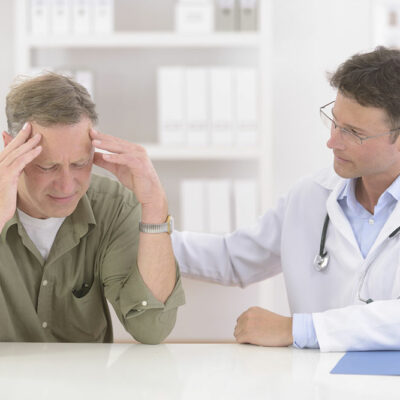
Symptoms of testicular cancer
Testicular cancer manifests through many symptoms and signs, but at the same time, these symptoms may not be a conclusive indicator. The symptoms could be caused by other medical conditions as well. Additionally, in some cases, men with testicular cancer do not exhibit any symptoms until the late stages. It is essential to know about the symptoms of this condition to get an accurate diagnosis during the early stages.
Symptoms
- One of the early symptoms of testicular cancer is swollen testes accompanied by a small lump.
- Men may also experience a slight swelling, small lump, or enlargement of the testes. The area around the testes may become tender.
- Other signs are an uncomfortable feeling, numbness, and pain. These signs may affect an individual who may or may not have a swelling on the scrotal sacs.
- Men in the early stages of testicular cancer feel constant pain in the lower abdomen and groin.
- In rare cases, testicular cancer results in the creation of additional tissues around the breast due to the production of hormones by the testicular tumors.
- Sudden development of fluid in the scrotum accompanied by a small, painless lump or a swelling in one of the testicles is a symptom of testicular cancer.
- Frequent bouts of pain in the lower back, breathlessness, and pain in the chest are other symptoms.
- Hernia, which is a result of an opening in the abdominal muscle, could also be a symptom of this condition.
- Testicular cancer can create a feeling that the scrotum weighs heavier than normal. It can also cause a sudden secretion of fluid and accumulation inside the scrotum.
For some men, the symptoms do not appear until testicular cancer has spread to other parts of the body. In boys and young males, some secondary sexual characters appear earlier than expected due to the secretion of male sex hormones. These might be symptoms of testicular cancer.
Testicular self-exam
If one suspects the symptoms they’re exhibiting symptoms which are similar to those caused by testicular cancer, they can conduct a simple self-examination. While examining the testicle, they should slowly, but firmly, roll each of their testes between the thumb and fingers. If they sense a lump or pain at a particular spot, the possibility of testicular cancer is high. During this self-exam, it is essential to not mistake the epididymis for a lump or swelling. The epididymis runs like a thread on the top and back of the testicle. Ideally, men should check for any abnormalities while they bathe as the skin is most relaxed then.
At times, the testes may look swollen or enlarged without the presence of a lump. There is also a possibility that one testis is bigger than the other. Even if one finds a swelling or a lump in the testes, they should not come to their own conclusions. At such times, it is best to consult a doctor as they will examine the patient and put any doubts to rest.


